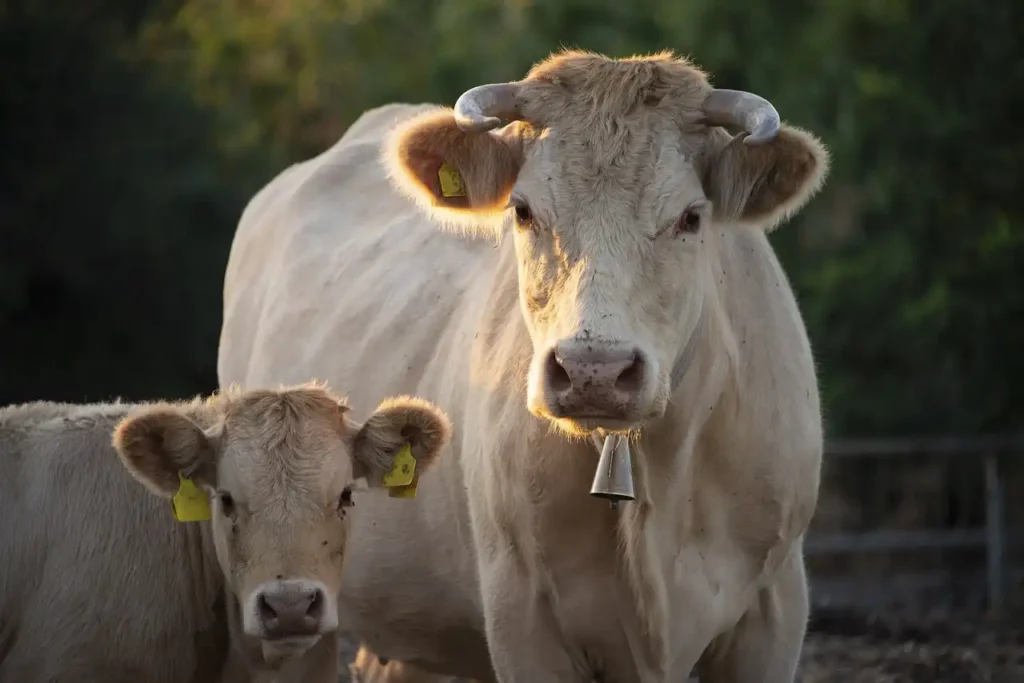Origins and Historical Development
Organic cattle farming traces its roots to traditional agricultural practices that predate modern industrial farming. In the early 20th century, as conventional farming became increasingly dependent on synthetic chemicals and intensive methods, a counter-movement emerged advocating for more natural approaches. Sir Albert Howard, often considered the father of organic agriculture, developed many foundational principles during his work in India between 1905 and 1931, emphasizing the importance of soil health and natural cycles in livestock management.

Core Principles of Organic Cattle Farming
Natural Feeding Practices
Organic cattle must be fed 100% organic feed, consisting primarily of:
- Pasture grass and forage during grazing season (minimum 120 days annually)
- Organic hay and silage during non-grazing periods
- Certified organic grain supplements when necessary
- No animal by-products, synthetic additives, or GMO feeds
Pasture Management
Successful organic cattle farming relies heavily on rotational grazing systems that:
- Prevent overgrazing and promote pasture regeneration
- Maintain soil fertility through natural fertilization
- Support biodiversity and ecosystem health
- Minimize parasite cycles naturally
Animal Welfare Standards
Organic certification requires stringent animal welfare practices including:
- Access to outdoors and pasture
- Appropriate shelter from weather extremes
- Sufficient space for natural behaviors
- Minimal stress during handling and transport
Health Management in Organic Systems
Unlike conventional farming, organic cattle health management focuses on prevention through:
Natural Cattle Health Management
- Strong genetic selection for hardiness
- Balanced nutrition from diverse forage sources
- Stress reduction through appropriate handling
- Regular monitoring and early intervention
Alternative Treatments
When treatment is necessary, organic farmers prioritize:
- Herbal and botanical remedies
- Homeopathic treatments
- Natural mineral supplements
- Approved organic medications when essential
Environmental Benefits
Organic cattle farming provides numerous environmental advantages:
- Carbon sequestration through improved pasture management
- Enhanced soil organic matter and fertility
- Reduced water pollution from synthetic chemicals
- Increased biodiversity in farming ecosystems
- Lower fossil fuel consumption compared to intensive systems
These benefits contribute significantly to the overall sustainable livestock farming movement.
Economic Considerations
While organic cattle farming requires more land and labor, it often provides:
- Premium prices for certified organic products
- Lower input costs for feed and medications
- Reduced veterinary expenses
- Greater resilience to market fluctuations
- Diversified income streams through ecosystem services
Certification Requirements
To achieve certification for certified organic beef, farmers must:
- Maintain detailed records of all operations
- Submit to annual inspections
- Follow strict organic standards for at least three years
- Ensure complete traceability of all animals
- Use only approved organic inputs and methods
Read about Cattle Farming Grants.
Interesting Facts and Trivia
- Organic beef cattle typically take 6-8 months longer to reach market weight compared to conventional cattle.
- The world’s largest organic dairy farm is located in China, with over 60,000 cows.
- Some heritage cattle breeds are particularly well-suited to organic systems due to their natural hardiness.
- Organic grassland can support up to 50% more wildlife species than conventional pastures.
- Ancient Roman writers documented rotational grazing principles still used in organic farming today.
Modern Innovations in Organic Cattle Farming
Recent developments include:
- GPS-guided virtual fencing systems
- Drone monitoring of pasture conditions
- Mobile apps for grazing management
- Automated health monitoring systems
- Advanced organic feed preservation techniques
Frequently Asked Questions
Q: How long does it take to convert to organic cattle farming? A: The transition period typically takes three years, during which farmers must follow organic practices before achieving certification.
Q: Is organic cattle farming more profitable than conventional methods? A: While production costs can be higher, premium prices and lower input costs often result in comparable or better profitability over time.
Q: Can organic cattle receive antibiotics? A: While antibiotics are generally prohibited, they may be used to save an animal’s life. However, that animal must then be removed from organic production.
Q: What makes organic beef different from grass-fed beef? A: While all organic beef must include access to pasture, not all grass-fed beef meets organic certification requirements regarding feed, medications, and other practices.
Q: How much land is needed for organic cattle farming? A: Land requirements vary by region and climate, but typically 2-5 acres per animal unit is needed for sustainable organic production.
Looking to the Future
The organic cattle farming sector continues to evolve with:
- Growing consumer demand for benefits of organic farming
- Development of new organic feed alternatives
- Implementation of carbon credit programs
- Integration of technology for improved management
- Research into climate-resilient farming methods
Conclusion
Organic cattle farming represents a holistic approach to livestock production that balances productivity with environmental stewardship and animal welfare. While it presents certain challenges, the growing demand for organic products and increasing recognition of environmental benefits suggest a promising future for this sustainable farming method.
By combining traditional wisdom with modern innovations, organic cattle farming continues to demonstrate that sustainable livestock production is not only possible but increasingly necessary in our changing world. As we face challenges like climate change and increasing consumer awareness, the principles and practices of organic cattle farming offer valuable solutions for the future of agriculture.
